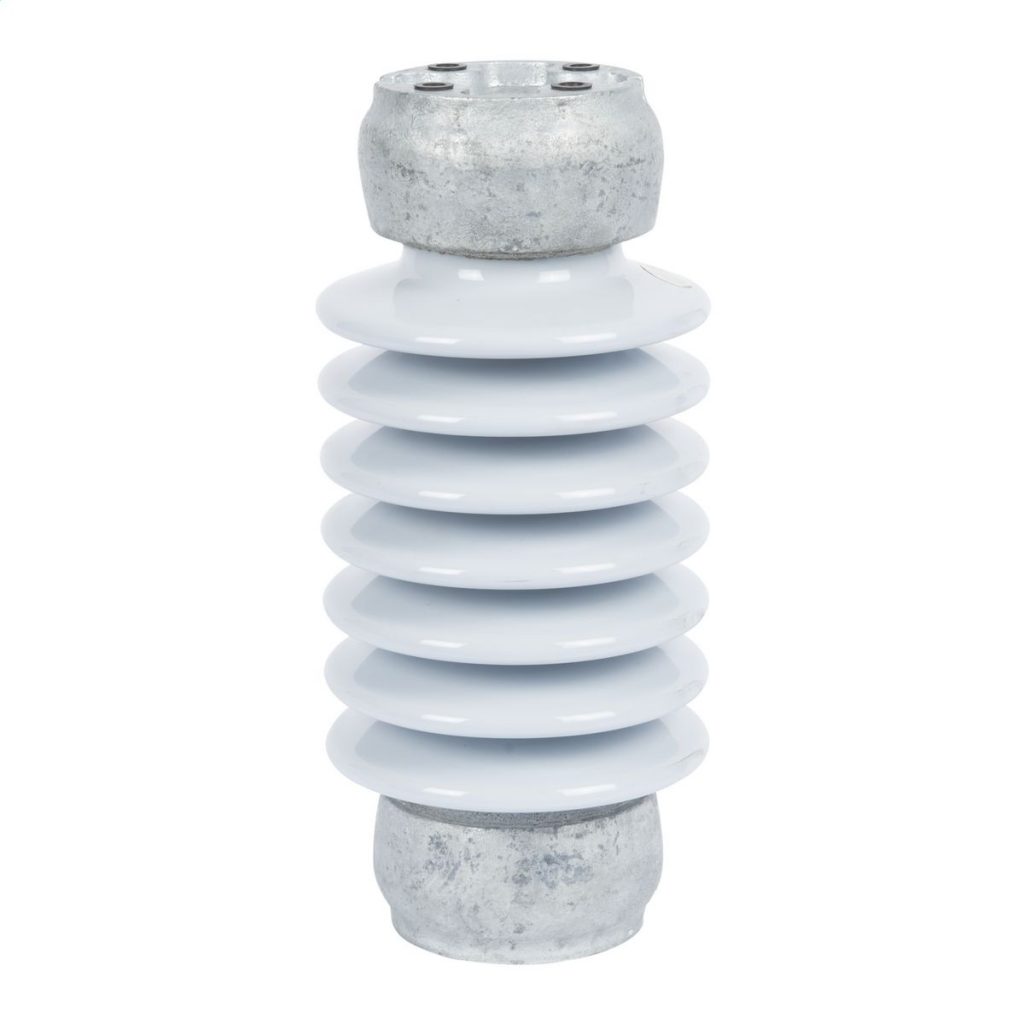Rich power offers good quality porcelain insulators including post insulator, pin insulator, suspention insulator and spool insulator. As a good manufacturer and supplier of porcelain insulators and porcelain bushings, we have good production line and complete inspection equipments. All products passed the test before delivery. We produce the porcelain insulators according the standards of IEC, DIN, BS, ANSI. OEM production is accepted also.
Main Characteristics of Post Insulators
High mechanical strength: Post-insulators face compression, torsion, and bending forces every day. As a result, the insulator must have high mechanical properties to overcome these forces, or it would simply collapse and cost more to replace.
Solid and puncture-proof: Being in an atmospheric space and exposed to pollution, rain, and other natural phenomena make them at risk of being damaged due to punctures.
Made of aluminum oxide ceramic and porcelain: The insulator’s material should be pure insulator as well as high strength properties. We use aluminum oxide ceramics as they have well-insulating properties.
Porcelain is also an excellent insulator, not underscoring its considerable strength.
Flexible creepage distance: The post insulators should have a reasonable creepage distance that will not endanger the integrity of the insulating path. This distance shields against tracking.
We should check if the product meets global standards. Same as the other transmission line equipment, the design and fabrication of post insulators should satisfy the minimum standards for IEC, IEEE, and NEMA. These standards guarantee the quality of the insulator.
Various Models of Post-Type Insulator:
Tie top-line post insulator: Core rod F neckline posts are technically similar to pin insulators and can be replaced alternatively.
Vertical clamp top line post insulator: This insulator has a stud base and a clamp top and is installed on the top of a pole.
Horizontal clamp top line post insulator: This type has a vertical clamp top line post that is installed on the side of a utility pole and is named a horizontal clamp top line post (stud mount).
Horizontal line post insulator (gain base): This type has a clamp top and a gain base that is usually installed on the side of a pole.
Brace post insulators: This type is a particular combination of a suspension insulator and a horizontal line post made of silicone rubbers.

The post insulator is constructed from composite materials (silicone rubber) or porcelain. We call porcelain post insulators and polymer post insulators. We are a manufacturer of porcelain insulators and composite insulators in China. The post insulator is extensively used in different applications because of its excellent mechanical properties. A post insulator is a High Voltage (HV) type of insulator which is designed based on the IEC, ANSI, and other standards. They can be used in a power system of up to 1100 kV. and the disconnector breaker switch and drop-out cutout fuse have to use the post insulators for support.
Most post insulators are produced of ceramic materials even though composite post insulators are entirely standard. Composite post-insulator types usually are tested based on the quality materials. The selection of the materials should satisfy both the mechanical and electrical qualities of an insulator.
Post insulators are similar to Pin insulators, but post insulators are more suitable for higher voltage applications. In transmission and distribution line applications, the post insulator is also known as the line post insulator. Based on the designs, there are five types of line post insulators called vertical clamp top line posts, tie top line posts, horizontal (stud mount) clamp top line posts, brace post insulators, and horizontal (gain base) line posts.
When we use a tie top line post insulator on power lines up to 69 kV, it is fastened to the conductors by a top tie and replaces conventional pin insulators. For fixing the other four types, we have a clamp unit at the end of the insulator. Line post insulators carrying conductors can be installed on the utility pole both horizontally and vertically.

